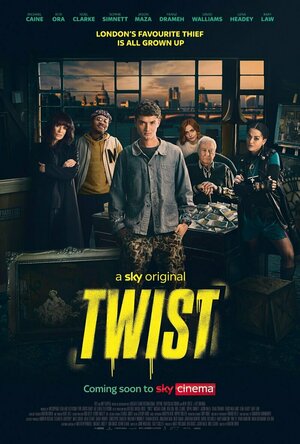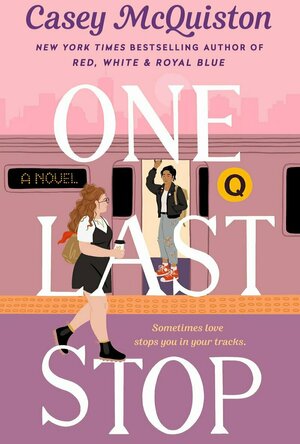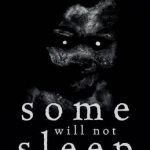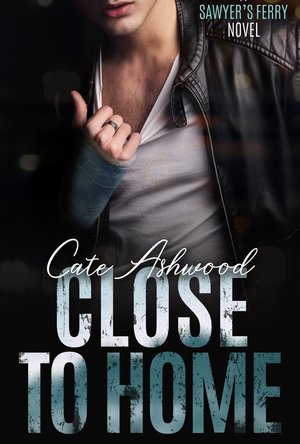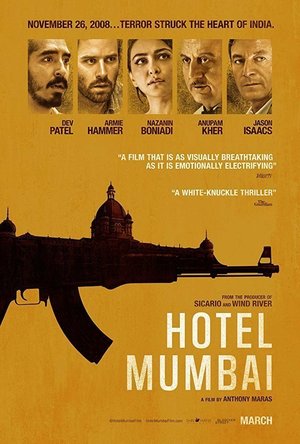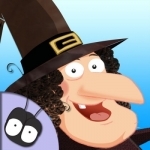
The Witch With No Name HD
Book and Games
App
The Witch With No Name is an artful blend of story and games *** Featured in the book "iPad Apps...

NIV Bible: British Text New International Version
Book and Reference
App
The official UK NIV Bible reading app with British Text from Hodder & Stoughton, publishers of the...
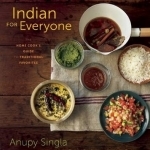
Indian for Everyone: The Home Cook's Guide to Traditional Favorites
Book
Now beautifully repackaged in convenient paperback format, Indian for Everyone is the third book by...
Emma @ The Movies (1786 KP) rated Twist (2021) in Movies
Feb 17, 2021
Twist has been fending for himself for a long time, but when he crosses paths with Dodge and Batesy, he finds himself a family on the wrong side of the law.
The trend for updating stories is one I've enjoyed in the past, but Twist felt like a weird hybrid of a film that... well, let's get into it.
It may have been based on Oliver Twist, but I genuinely don't think they should have made is such a big splash. Yes, there are similarities, but the majority of the time it just felt like it was the character names being thrown in at random to make the connection. And is it the sort of connection you need to exploit? I don't think that you've naturally got a crossover between what the story of Oliver Twist is and what is represented here.
As an ensemble it's got some pretty big names attached. Caine, Clarke and Headey are generally a good call when it comes to picking something to watch... this is definitely how I got tricked into watching Twist.
Caine was... Caine, if you know, you know. Headey was a psycho that came across so excessively over the top, maybe to give the film wider appeal in other markets? I'm not entirely sure to be honest. And Clarke at least made for some enjoyable watching.
Our other, younger cast members, were such a random group. Rafferty Law as Twist didn't give a lot, and I know that by the nature of his character origin and backstory his nature was supposed to be on a different level to the others, but I didn't find it very believable. Dodge and Batesy played by Rita Ora and Franz Drameh fit well together initially, but I quickly found Drameh to be much more skilled as Ora's acting became a little lacklustre.
Overall there's weren't many moments in Twist that worked for me because of this odd mix of cast. The biggest anomaly being Leigh Francis as the traffic warden. Had the tone of the film been different then I absolutely could have seen a place for him in it, but as it was his role stuck out like a sore thumb.
We witness a lot of freerunning (or parkour, I'm not sure which term is more appropriate here) through the film and they used this as an opportunity to fling the camera around too and put in some fancy moves. Generally I'm not a fan, and while they fit in the moment, they seemed out of place given that the rest of the camerawork felt a little more generic. I noted down that it seemed to almost be missing at some points, but I'm not sure if that's because I just sighed and ignored it or if it was only used on certain types of shots... I will not be watching it again to find out.
Twist feels like it's what you would get if you took the TV series Hustle and mixed it with a London gangster movie... but without the same level of finesse. There is definitely something in this film but I think I was severely distracted by the attempt to capitalise on a bizarre reworking of a classic tale.
Originally posted on: https://emmaatthemovies.blogspot.com/2021/02/twist-movie-review.html
Kristy H (1252 KP) rated One Last Stop in Books
Jun 3, 2021
"Truth is, when you spend your whole life alone, it's incredibly appealing to move somewhere big enough to get lost in, where being alone looks like a choice."
I've put off writing this review because it's hard to see how I can do McQuiston's beautiful romance any justice. This book is such a romantic, sexy, and heartwarming read. August is an excellent character. She's spent most of her life in her uncle's shadow, working with her mother to try to solve his missing person's case. August eventually declared herself done--done searching, done with mysteries. But then this beautiful woman appears on the subway, and she offers the biggest mystery of all to August. Why is Jane stuck on the subway and how can August help?
"And she can't believe Jane had the nerve, the audacity, to become the one thing August can't resist: a mystery."
McQuiston gives us the most amazing, diverse queer novel one could ever wish for. August is bi and Jane basically every lesbian's dream. It's impossible not to fall in love with this gorgeous Asian subway vision. Even better, through Jane and other events, it's a tribute to those who came before our generation. Jane was a (incredibly sexy) activist / riot girl in the 1970s, yet is shocked that you can typically be openly gay on the subway now. She comes to everyone's defense there. She's amazing. As for August's roommates, they are beautiful and diverse, including trans and gay characters, with the lovely Myla taking care of the group. There are several drag queens given legitimate, true storylines. To say how meaningful this is to the queer community--it's hard to even explain. All of these characters--roommates Myla, her boyfriend, Niko, and Wes; neighbor Isaiah; coworkers Lucie and Winfield--are real and treated with care. They are funny, flawed, and create the most amazing found family ever.
"Jane doesn't age. She's magnetic and charming and gorgeous. She... kind of lives underground."
As for August and Jane, this is a romance for the ages. This book is swoony and sexy. It will make you laugh; it will make you cry. McQuiston has written a lesbian character for us lesbians to ogle for years to come, and a romance to stack all other romances against. It's funny and heartwarming. There's magic and mystery. There's pancakes. It's a beautiful ode to New York City, the subway, and falling in love. There's seriously nothing not to love.
So yes, I loved this book. I love McQuiston's way with words--the humor, the romance, the way she allows the queer community to have meaningful love stories in our world. This book is flowing with passion, with beauty, and magic. 4.5+ stars.
Lyndsey Gollogly (2893 KP) rated Some Will Not Sleep: Selected Horrors in Books
Jun 22, 2021
Kindle
Some Will Not Sleep: selected horrors
By Adam Nevill
Once read a review will be written via Smashbomb and link posted in comments
A bestial face appears at windows in the night.
In the big white house on the hill angels are said to appear.
A forgotten tenant in an isolated building becomes addicted to milk.
A strange goddess is worshipped by a home-invading disciple.
The least remembered gods still haunt the oldest forests.
Cannibalism occurs in high society at the end of the world.
The sainted undead follow their prophet to the Great Dead Sea.
A confused and vengeful presence occupies the home of a first-time buyer.
In ghastly harmony with the nightmarish visions of the award-winning writer's novels, these stories blend a lifelong appreciation of horror culture with the grotesque fascinations and childlike terrors that are the author's own.
So I wrote a few notes on each story that I enjoyed!
They are just little rambling I’m far from a in depth critic!
1. Where Angels come in
I’ve read this before and it it’s stuck with me for some reason. We all had that one house as kids that spooked us, only luckily mine was never full of creepy things.
2. The Original Occupant
A man determined to spend time in a Swedish forest finds himself disturbing a sacred ritual only to disappear after writing a frantic letter to his friends. After a search of the house and forest he’s never seen again! Really good and quite creepy never mess with someone’s sacred alter!
3. Mother’s Milk
Well that’s just made my stomach turn! A man thinks he’s found lodgings and a job finds himself turned into a milk fiend the source of the milk is definitely an interesting one.
4. Yellow Teeth
An old friend comes to visit and never leaves. This was creepy I’d just hate having someone around me that filthy and smelly.
5. Pig Thing
A strange little piggy tale after a family move to New Zealand
6. What God have Wrought
This follows a soldier searching across desert for the creature that holds his sister! For some reason this didn’t grab me.
7. Doll Hands
This is what will happen when the world comes to an end the over privileged using the poor souls as meat! Quite chilling!
8. To Forget and be Forgotten
I loved this! It reminded me of his Apartment 16 which is a book I fell totally in love with and the first book I read of Adams and this was in that style. A lot of the paragraphs struck home with me especially at the start! Solitude is something we all seek at some point and being around people can be taxing.
9. The Ancestors
This is the second time I’ve read this and it still creeps me out! A little girl makes friends with a ghost and some toys that have dark intentions and definitely dislike parents!
10.!The Age of Entitlement
11. Florrie
Another brilliant short! I think a good cleansing of all newly brought houses is in order to prevent this!
Overall I absolutely love his writing style each story even ones I didn’t quite click with transports you to that scene you’re reading. I’m building a steady collection of Adams books I highly recommend anyone of them!
Night Reader Reviews (683 KP) rated Scavengers in Books
Dec 5, 2020
Olivia Taylor lives safely within the confines of the Community along with other survivors. This Community was founded after a virus outbreak to protect the survivors from raider attacks. Unfortunately not all is perfect in the Community. Soaring temperatures and a lack of resources mixed with the ever present threat of discovery cause the Community’s numbers to drop, resulting in the need for a Scavenging trip. Olivia and all the other children of the Community that are of age report to volunteer to scavenge and this year she is finally picked. Now along with four others Olivia must leave the safety of the Community in an attempt to bring back supplies, food, and new members or not come back at all.
Before the foundation of the Community disaster struck the world. A virus ran rampant and high temperatures cause drought and dehydration. Out of desperation the entire Taylor family leaves their home, along with many others, in search of a safer place to live. Yet in a world that is falling apart danger is everywhere and the journey is not an easy one. Finally they meet up with others fleeing the city but they have to stop and wonder if anywhere is safe anymore.
I was very happy to find halfway through the book that it changes focus from Olivia to Grace. This answered many questions that I was beginning to forum but was afraid I would never get an answer too, and yet did not explain everything. The book is also well detailed and I can sense a well thought out backstory driving everything. I wanted more out of the book in the end for both parts of the story. The cliffhangers and unanswered questions would easily be fixed with a sequel that I feel this book deserves. Although this is a full length book it still felt more like a teaser than anything.
Teens and young adults will enjoy this book just as much if not more so than adults. While there are hints toward sexual activities both wanted and not nothing happens with any detail and will go over the heads of many young readers. The young readers will enjoy the story and I suppose some of the older readers will start questioning just how these events came to pass. I rate this book 4 out of 4. This book deserves a sequel. It is very well written and an enjoyable book with a style that reminded me of Hunger Games (along with a few others previously mentioned). It could easily make itself at home on shelves right alongside other such dystopian books. This book is so gripping a read that many reader should be able to finish it in just a couple of days.
Scavengers | Book| Austin Macauley Publishers
Debbiereadsbook (1608 KP) rated Close to Home (Sawyer's Ferry #4) in Books
Jun 28, 2019
This is book 4 in the Sawyers Ferry series, but you don't NEED to read the other books for this one to make sense. The previous stories come before this in time, and the previous characters pop up here too. But, you know? two 5 stars and a 4star read from me, so why not, eh?
Witt somehow manages to get himself a beating, and by some miracle, drives himself to the only place he feels safe: Sawyers Ferry. His boss did not like it when Witt said no. Mason is struggling at his place with his house mates family visiting, so when Logan and Jackson ask Mason to move into their place to keep an eye on the still recovering Witt, he jumps at the chance to not only get out his house, but to get to know the shy man a whole lot better. Something about Witt pulls at Mason, and he can't figure out what, not yet. But when Witt's boss turns up in town, Mason figures it out real quick. Witt is HIS and Mason will do everything he can to protect him.
So, book 4 and this carries a far darker story line. Witt has been working with a bully, and managed to, up to now, avoid any serious confrontation but when Witt says no to more overtime, that confrontation happens and Witt suffers at the hands of his boss. How he managed to get as far as the ferry, he will never know, but Logan and Jackson are there, they will help him. Then Mason is in the house, and Witt doesn't quite know what to do about the man who seemed to have invaded his dreams somewhere along the way.
Mason works with Barrett at the Copper Creek Brewery. He met Witt some time ago, the smaller shy man trying to almost hide in the sofa. But Mason noticed, he noticed a lot about Witt. Visiting Witt at the hospital bought all kinds of rage out of Mason, and all kinds of other feelings he didn't want to examine just yet. Being able to look after Witt when Logan and Jackson go out of town is just the best thing.
Slowly, Witt comes out of himself. He is painfully shy, and Mason so darn gentle with him, it was a delight to see Witt break his shell. And when Witt decides to take the plunge and take what he wants, or rather WHO he wants, ooooeeee that was so hawt!
It was great fun watching these two dance around each other for a huge part of the book! Mason admitted his feelings to Barrett and Frnakie quite early, but Witt took a while to get there. Neither man was sure what the other was feeling!
Brody pops up, and Mason's best friend. He has a short in this series, Laguna, which is availble for free from Profilicworks. And I do mean SHORT! 34 pages is all, but I do know that Ms Ashwood will be writing Brody and Beckett's full story shortly! Can't wait for that, I tell ya!
I just got back off my holidays, and I read this on the plane. Fabulous way to pass a 4 hour flight!
5 full and shiny stars!
**same worded review will appear elsewhere**
Darren (1599 KP) rated Hotel Mumbai (2019) in Movies
Oct 2, 2019
Performances – Dev Patel, Nazanin Boniadi, Armie Hammer, Anupam Kher and Jason Isaacs are the biggest names in this film, their performances are faultless, we have one of the best all around cast performances too, from everyone involved.
Story – The story here shows the guests and staffs point of view of the terrorist attack on the Taj hotel in Mumbai in 2008, it shows what they did to survive, how heartless the terrorists were and gives the many people who risked their lives a chance to show their story. There is no easy way to describe this story, it was one of the worst ground level terrorists in attacks in recent history, seeing how calculated the terrorists were in their actions in hard to watch, seeing how helpless the victims were, is heart breaking. We can see how horrific their actions were and just how heroic the staff at the hotel were, when it comes to helping the helpless.
History/Thriller – The moment in history will always be one that shocked the world, it is one that you should have heard about and now you can hear the stories of the people involved. It is a film that will keep you on the edge of your seat throughout the film.
Settings – Most of the film is set within the walls of the Taj hotel, it showed us just how trapped the victims and survivors would have been.
Scene of the Movie – Lift sequence.
That Moment That Annoyed Me – However hard this would be to portray everyone involved, it does feel like some of the characters and people don’t get enough of a story behind there events.
Final Thoughts – This is easily one of the most intense films you will see and it shows just how horrific the events of the film were to the people involved.
Overall: Pure Intensity
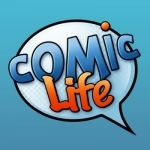
Comic Life 3
Comics, Education and Photo & Video
App
The Most Powerful Photo Comic Creation App Available. "Of the comic book apps I’ve used, Comic...
